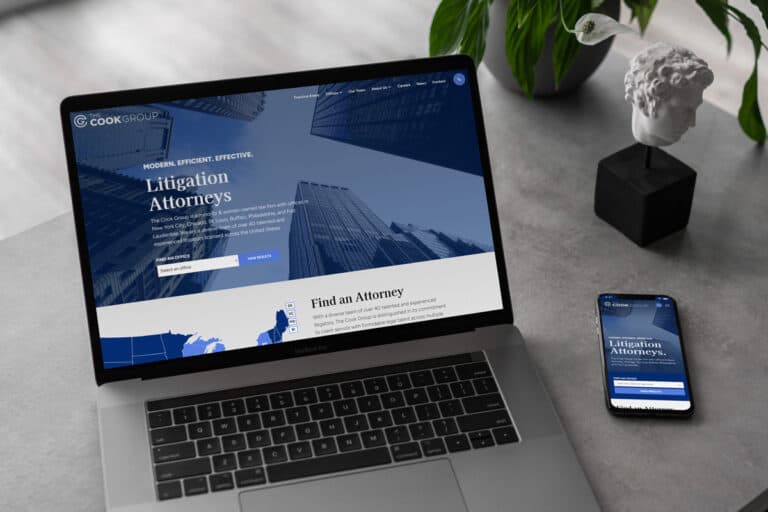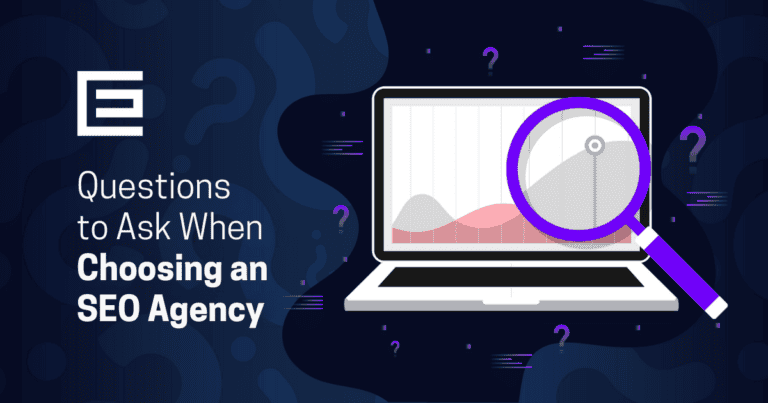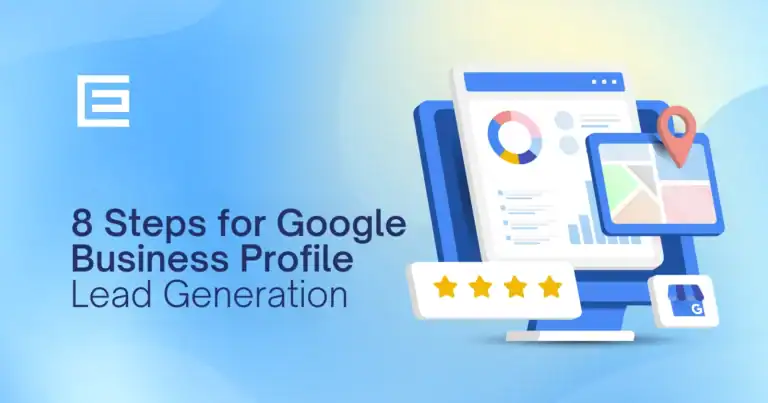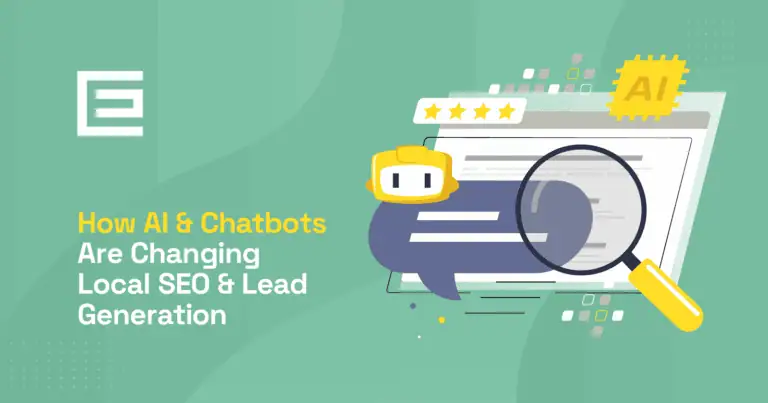Effective lead generation is moving fast—shaped by AI, rising ad costs, and shifts in how buyers research and engage. Join the digital marketing team from TheeDigital as we cut through the noise with what matters now, what to plan for in 2026, and how to align your lead generation strategies for measurable pipeline growth.
- 1Introduction to Lead Generation
- 2What Is Lead Generation?
- 3The AI Search Advanatge: Real Business Impact
- 4Benefits of AI in Lead Generation
- 5How AI Transforms Lead Generation
- 6Best AI Tools for Lead Generation
- 7Roadmap and Infrastructure for AI Lead Generation
- 8Step-by-Step: Implementing AI Lead Qualification
- 9AI Lead Qualification: Key Metrics to Track
- 10Common Challenges and Solutions
- 11Best Practices for AI-Powered Lead Generation
- 12The Future of AI in Lead Generation
- 13AI Frequently Asked Questions

What Is Lead Generation?
Lead generation is the process of attracting, capturing, and qualifying potential customers (leads) for your products or services. The goal isn’t just volume—it’s creating predictable, cost-efficient lead generation strategies that convert.
Below are the primary strategies used by lead generation companies that can be implemented in your marketing plan today, plus where they fit in a 2026 growth plan.
Paid Advertising (Search, Social, and Shopping)
Paid media remains the fastest, most controllable source of leads. Despite higher cost per lead (CPL) in recent years, targeted paid advertising campaigns still reach in-market buyers and can be dialed up or down to hit pipeline targets.
Paid local lead sources include:
- Google Local Services Ads (LSAs): Pay-per-lead placements at the top of local results that prioritize trust signals like reviews and verification; ideal for service businesses needing booked calls.
- Geo-Targeted Ads on Social Platforms: Audience targeting through platforms like Facebook, Instagram, and LinkedIn that are layered with strong offers and local qualifiers can capture demand even when users aren’t actively searching.
- Google Search: High-intent keywords continue to drive ready-to-buy traffic; winning here requires precise match types, ad strength, and landing page quality.
- Google Shopping Campaigns: For ecommerce businesses, including listings that surface your SKUs with rich visuals and pricing, creating a fast path to product detail pages.
SEO and Content Marketing
Organic search is still valuable, but generative AI has introduced more zero-click answers and AI Overviews. The Search Engine Optimization (SEO) playbook shifts from pure rankings to visibility across surfaces (People Also Ask, video carousels, map pack) and building content that earns branded searches and trust.
Social Demand Creation (Paid and Organic)
Use social media to spark interest before people start searching. Short videos, creator shout-outs, and helpful community posts introduce your brand to the right audience. Then retargeting (showing follow-up ads to people who engaged) brings them back with specific offers. Done well, social warms up prospects so your search, ads, and email convert at lower cost.
Outbound and Prospecting
Reach target accounts directly with firmographic filters (company size, industry) and intent data (who’s researching your topic). Define your ideal customer profile (ICP) and territories to avoid overlap, then use Customer Relationship Management (CRM) automation for timely, personalized touches and clean tracking. The result: targeted outreach—not spam—and more meetings with the right buyers.
Partnerships and Referrals
Borrow trust from brands your audience already knows via co-branded content, affiliate links, and simple referral incentives. These leads convert at higher rates because credibility is built in, and partnerships help stabilize cost per lead when paid media gets pricey.
Events, Webinars, and Workshops
Teach first with practical demos, webinars, or local workshops to attract serious prospects—especially in B2B and high-ticket services. Record the session, share the replay, and run a concise post-event with summary, slides, and next steps to turn mid-funnel interest into sales conversations.
Trend #1: Conversational Marketing
In 2026, prospects expect instant answers in the channel they’re already using—AI lead generation comes in the form of website chat bots, voice assistants, and messaging apps. Conversational AI lead generation marketing captures that intent in real time, qualifying it, and moving serious buyers directly to a booked meeting. It’s faster than traditional forms, more personal than static FAQs, and scalable across time zones.
Why Conversational Marketing Drives Lead Quality
The lead generation trend of using AI-driven conversations reduces friction at the exact moment curiosity peaks. Instead of making visitors hunt for pricing or wait for replies, chatbots surface tailored answers, capture details, and present the next best step—significantly lifting conversion rates on high-intent pages.
Conversational flows gather richer context than forms alone. By asking one question at a time—budget, timeline, role, use case—the system builds a useful profile without overwhelming the user. This data improves routing, personalizes follow-ups, and helps sales prioritize the most qualified opportunities.
Where To Deploy Conversational Tools
Use AI lead generation where intent is highest and answers must be immediate:
- High-Intent Pages: Pricing, demos, and service pages benefit from chat that quickly triages, qualifies, and books.
- Voice Search Moments: Structured Q&A content and local optimization help you surface in voice results, especially for “near me” queries.
- Messaging Apps: WhatsApp, Facebook Messenger, and LinkedIn messages reduce friction for mobile-first users and international buyers.
Trend #2: Sustainable and Values-Based Branding
In 2026, AI summaries and crowded marketplaces reward brands with a clear, measurable promise—not slogans. Successful lead generation companies define a one-sentence value promise tied to outcomes buyers track (e.g., reliability, safety, sustainability metrics), then prove it across ads, landing pages, Google Business Profile, and sales scripts with reviews, certifications, and case results.
Why Values Lift Conversion
Buyers de-risk decisions with trust signals. A simple, consistent brand promise—supported by outcomes, reviews, and third-party validation—raises ad relevance, improves landing page performance, and grows branded search, which lowers blended CPL over time.
Where To Infuse Brand In Lead Gen
When implementing lead generation trends into your 2026 marketing, showcase brand proof where prospects vet credibility and make choices:
- Offer Pages and Ads: Repeat the value promise and add outcome proof so the journey feels consistent from click to form.
- Google Business Profile: Show service accuracy, photos, and owner responses that demonstrate reliability and care.
- Case Studies and Reviews: Tie values to measurable results so buyers can justify decisions internally.
- Social Profiles and Community: Share progress on initiatives customers care about to build recognition and trust.
Trend #3: Video and Interactive Content
Short-form video earns attention and interactive tools convert attention into data you can act on. In 2026, one of the essential lead generation trends is to implement shoppable experiences and personalized calculators to shorten the path from curiosity to contact.
Why Video and Interactive Content Drives Lead Quality
Video clarifies offers fast, improving time on page and ad performance. Interactive tools—quizzes, ROI calculators, product finders—deliver personalized value in exchange for contact info, giving you declared-intent signals that improve routing and follow-up.
Repurposing multiplies ROI. One anchor video can be cut for Reels, Shorts, and LinkedIn; one calculator fuels ads, landing pages, and segmented nurtures—raising conversion rates at lower incremental cost.
Where To Deploy Video and Interactives
Utilize this lead generation strategy by placing formats where they reduce friction and capture intent:
- Paid Social and Remarketing: Short explainer cuts answer one pain point per clip and drive high-intent clicks.
- Landing Pages: Pair a 30–60 second explainer with proof and a single CTA to lift form completion.
- Product/Service Pages: Add tap-to-CTA or shoppable overlays to compress research and booking.
- Post-Capture Nurtures: Trigger segmented email/SMS based on quiz or calculator inputs for relevant next steps.
Trend #4: Community-Led Growth
Buyers trust peers more than brands. In 2026, one of the popular lead generation trends that businesses will put into action is to use private groups, niche communities, and micro-influencers to shape vendor shortlists and accelerate referrals.
Why Community-Led Growth Drives Lead Quality
Recommendations in trusted spaces come with built-in credibility, shrinking sales cycles. Member-created content—how-tos, unboxings, results—acts as always-on social proof. Direct access to users also tightens messaging, offers, and product-market fit.
Brand-run, owned communities keep customers engaged, increasing retention and driving expansion through upsells, cross-sells, and referrals. When customers engage each other, they surface new use cases and identify upgrade opportunities—turning the community into a pipeline and revenue channel.
Where To Build Or Partner
Invest lead generation strategies for community growth where relevance and trust are highest:
- Owned Groups: Host a focused Slack, Discord, or private group for a defined role, tool, or region.
- Niche Creators: Partner with micro-influencers whose authority comes from depth, not follower counts.
- Customer Councils: Give power users early access and referral perks to amplify word-of-mouth.
- Industry Communities: Participate consistently with tactical advice, not pitches, to earn recommendations.
Trend #5: Local SEO and AI Search Optimization
Zero-click answers and AI overviews are reshaping discovery in 2026, making lead generation companies restructure their tried-and-true strategies. Local entities with clean data, real reviews, and structured content will win visibility—and the calls, messages, and direction requests that follow.
Why Local and AI Optimization Drives Lead Quality
AI systems favor clarity and consistency. Utilize lead generation strategies that prioritize complete profiles, precise services, and credible reviews to increase inclusion in summaries and Map Pack rankings. Those surfaces generate high-intent actions, like calls and bookings, that convert at strong rates.
Structured Q&A content helps voice and AI answers reference your brand. The more directly you address common questions, the more likely you are to appear when prospects ask.
Where To Optimize For Local and AI
Strengthen the assets that AI systems and local rankings depend on by optimizing lead generation trends in the following areas:
- Google Business Profile: Keep categories, services, photos, and Q&A accurate and active to boost visibility and conversions.
- Reviews and Responses: Build steady review velocity and reply promptly to signal reliability and service quality.
- Service Area Pages: Publish unique pages for priority cities and neighborhoods with details buyers actually search for.
- Structured Q&A Content: Add concise, factual answers to common queries to improve odds of AI and voice inclusion.
Trend #6: First-Party Data and CRM Automation
Privacy shifts and rising ad costs reward brands that capture, enrich, and activate their own data. In 2026, one of the lead generation trends that companies will highlight in marketing strategy includes lightweight CRMs and simple automation. This will turn sporadic inquiries into a predictable pipeline.
Why First-Party Data and CRM Drives Lead Quality
A unified system for contacts, companies, and deals enables lead scoring, smart routing, and timely outreach. Clear lifecycle stages (MQL, SQL, opportunity) align marketing and sales, improving forecast accuracy and close rates.
Automation protects speed-to-lead. Instant alerts, round-robin assignment, and calendar booking reduce delays that kill deals—especially on high-intent traffic from paid search and LSAs.
Where To Automate For Impact
Use this lead generation strategy where organization and speed pay off fastest:
- Intake and Routing: Standardize forms, tags, and sources; route by territory, product, or urgency for cleaner handoffs.
- Lifecycle Stages: Define and enforce MQL/SQL/opportunity criteria so teams focus on the best fits.
- Speed-To-Lead: Trigger immediate notifications and calendar links to connect within minutes, not hours.
- Reactivation Flows: Re-engage cold leads with new proof, pricing, or offers to unlock hidden pipelines.
FAQs About Lead Generation
What is lead generation for AI and is it worth it?
Yes—when used to augment, not replace, strategy and human judgment, AI lead generation is worth it. AI-driven lead generation uses artificial intelligence to find, qualify, and nurture prospects by analyzing signals like behavior and firmographics, then automating tasks like lead scoring, chatbots, and personalized outreach.
AI lead generation augments human strategy so teams respond faster, focus on best-fit leads, and lower cost per meeting or opportunity.
What are the best lead generation strategies for local businesses?
A blended approach is always best—Google Business Profile optimization, LSAs, review generation, city-specific landing pages, and targeted social ads with strong local offers. Pair with fast, automated follow-up for the best opportunity for results that deliver.
How do I lower my cost per lead without cutting volume?
Tighten targeting, strengthen offers, improve landing pages, and accelerate follow-ups. Then reallocate resources to the campaigns with the best cost per qualified opportunity—not just lowest CPL.
Which metrics matter most for scaling lead generation into revenue growth?
Track a few that prove leads become customers: cost per qualified opportunity, meeting set/show rate, opportunity-to-close rate, speed-to-lead, and Customer Acquisition Cost (CAC) vs. LTV. Review pipeline by channel weekly and shift budget to the sources creating the most closed-won revenue at an acceptable CAC.
How does TheeDigital implement lead generation for clients?
We start with a website audit and clearly identify your ideal customer profile, then build offer-led funnels across paid search/social, LSAs, and local SEO. We pair conversion-optimized landing pages with speed-to-lead automation in HubSpot (routing, scoring, nurtures) and track cost per qualified opportunity in dashboards to reallocate budget weekly toward what’s driving revenue.
Contact Our Trusted Lead Generation Experts Today
Build a stronger, more predictable pipeline in 2026 with a lead generation marketing team that delivers results. Our trusted internet marketing specialists at TheeDigital can audit your current programs, identify quick wins, and design a scalable plan across paid, organic, and automation.
Tell us your goals, timeline, and budget, and we’ll map a clear path to more qualified leads and lower acquisition costs. Set up an initial consultation with a member of our marketing team by calling 919-341-8901 or filling out the form below to get started.
Tags: AI • Lead Generation • Search Engine Optimization






